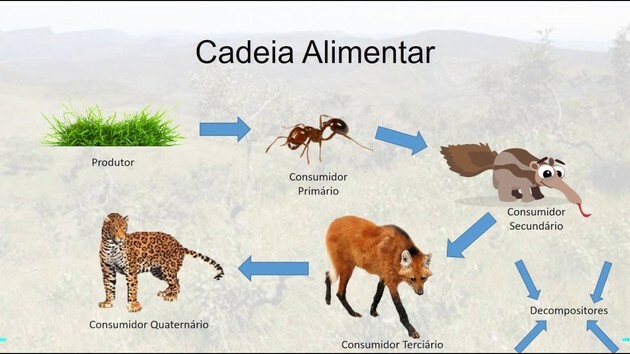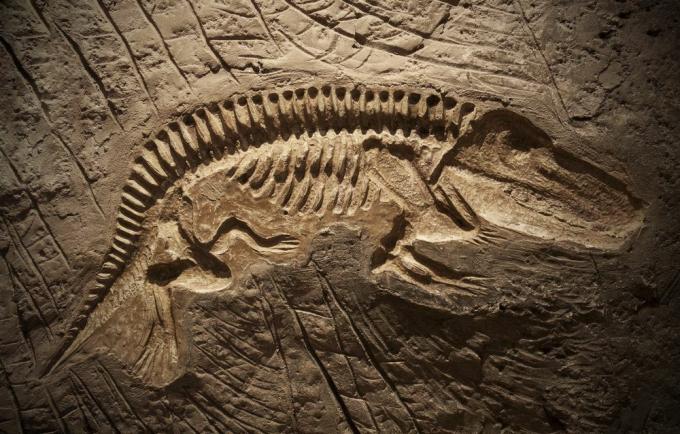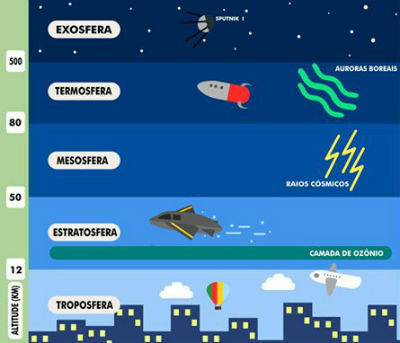Air Pollution or Atmospheric Pollution is the result of the release into the atmosphere of large quantities of gases or liquid and solid particles, which cause environmental impact and problems...
Electric energy is the main source of energy in the world, produced from the electrical potential of two points in a conductor. It was the Greek philosopher Thales of Miletus who discovered through...
Soil is the top layer of the earth's crust. It is a complex composed of mineral and organic materials. Soil formation and composition Soil is the result of the action of several...
The skin is our body's largest organ, covering and ensuring a large part of the relationships between the internal and external environment. In addition, it works in defense and collaborates with other bodies for good...
The flower is the structure responsible for the reproduction of angiosperm plants. It is through reproduction that new plants are originated, ensuring the maintenance of ecosystems. Functions...
The three existing rock types are: magmatic rocks, sedimentary rocks and metamorphic rocks. Remember that rock is a natural aggregate formed by one or more minerals. Your process of...
The atmospheric air that surrounds the Earth is a mixture of gases, water vapor and suspended particles (dust, soot, chemicals, among others). The elements that make up the air are...
Wind Energy is the process by which wind is transformed into kinetic energy and from it into electricity using specific equipment. Wind is used as a power generator...
The veins in the human body are blood vessels that are part of the body's circulatory system and branch throughout our body. The main function of the veins is to transport blood,...
Water pollution is the result of changes in its quality that make it unfit for consumption and harmful to living organisms that inhabit it. As your properties are...
Eukaryotic cells or eucells form the most common single-celled organisms (protists and some fungi, such as yeasts) or multicellular (fungi, plants and animals) on the planet. They are...
The Kingdom Fungi is represented by unicellular or multicellular eukaryotic organisms, being found in the most diverse types of environments. Among the fungi, there are mushrooms, molds,...
Proteins are the most abundant organic macromolecules in cells, fundamental to cell structure and function. They are found in all cell types and in viruses. They...
Sandy soil, also called "light soil", is a type of soil very present in the northeast region of Brazil. It has a light, grainy texture and is composed largely of sand...
The "Water Treatment" is a long process of transformation through which the water goes, until it is ready to be used to supply the population, regardless of the function it will have. Thus,...
Fertilization is the union of gametes (eggs and sperm) and can happen in two different ways: Internal fertilization: occurs inside the animal's body; External fertilization: occurs...
Clay soil, called “heavy soil”, is a soft, moist soil made up of more than 30% clay, aluminum and iron. After the rain, the clay soils, which absorb a lot...
Noise pollution is the excess of noise that affects the population's physical and mental health. It's the high decibel level caused by the constant noise coming from activities that disturb the...
The earth system is formed by: lithosphere, atmosphere, biosphere and hydrosphere. The Earth's internal structure, which presents the lithosphere as a surface part, is basically divided into layers...
Insects are invertebrate arthropod animals, belonging to the Phylum Arthropoda and Class Insecta. They represent the group with the greatest diversity among all animals on the planet. They are about...
The interactions between the biotic communities that make up an ecosystem are called “Biological Interactions” or “Ecological Relations”. They determine the relationships of beings...
Planets are celestial bodies without their own light and heat, solid, rounded and with their own gravity, which revolve around a larger star (free orbit), which in the case of planet Earth...
Ovoviviparous animals are those whose embryonic development takes place inside eggs that develop inside the maternal body. In ovoviviparous, the embryo feeds from reserves...
Soil Pollution is any and all changes in its nature (soil), caused by contact with chemical products, solid residues and liquid residues, which cause its deterioration when...
Air is a fundamental element, being formed by a combination of gases, water vapor and suspended particles. It is, therefore, a vital substance for the maintenance of life on earth,...
The cytoplasm is the region of the cell where the nucleus and organelles are found, as well as other structures with specific functions. It consists of a fluid substance called...
Solar energy is a renewable energy obtained from sunlight, used for heating water (thermal energy) or as a source of electrical energy. Just as wind energy is one of the...
Algae are photosynthetic protist, eukaryotic and autotrophic beings. They are fundamental to the maintenance of life on Earth because they release large amounts of oxygen to the...
Protozooses are diseases transmitted by protozoa. Despite being free-living organisms, in most cases, some protozoa are parasites of animals and humans...
Energy in physics is an extremely important concept and represents the ability to produce work. It is also used in other scientific fields such as biology and chemistry. The living beings...
Fossils are traces of very old organisms (animals and plants) that have been preserved as years go by through natural processes. The remains that...
The blue macaw is a bird of the parrot family, as well as parrots, parakeets, parrots, among others. There are three known species of hyacinth macaws: the great hyacinth macaw, the hyacinth macaw...
Colloids, colloidal solutions or colloidal system are mixtures that present the appearance of a solution, that is, a homogeneous mixture. But actually they are heterogeneous mixtures. That...
Pteridophytes are vascular or tracheophytic plants, that is, they have conductive and cryptogamous tissues because they do not have seeds. The best known examples are ferns, ferns and...
The Giant Anteater is a mammal native to America. It gets its name since its tail is shaped like a flag. In some places in Brazil they are known by the names:...
The fruit is the fleshy structure of angiosperm plants that develops from the ovary after fertilization. It corresponds to the flower's developed ovary with mature seeds. At...
The energy present in bodies giving them the ability to do work is called Potential Energy. When it is related to the work of the weight force, the energy stored in the bodies is...
The maned wolf is a mammal that is threatened with extinction. Unlike other wolf species that live in a pack, the maned wolf is a solitary animal that lives in the Cerrado...
Lamarckism or Lamarckism corresponds to the ideas developed by the naturalist Jean-Baptiste Lamarck about the evolution of living beings. These ideas were fundamental to the knowledge of...
Natural resources are the elements offered by nature, which in turn, are used by man in the construction and development of societies and, therefore, for their...
Non-renewable energy (or dirty energy) are those produced from energy sources that are depleted in nature and, therefore, cause various environmental impacts. This source energy...
Human Anatomy is the science that studies body structures, how they form and how they work together in the body (systems). What Does Anatomy Study? Anatomy analyzes how...
Venus is the second planet in the Solar system closest to the Sun. It is about 800 million years old and beyond the Sun and Moon it is the brightest celestial body in the sky, which is why it is known...
Mico-Leão-Dourado is a mammal that lives exclusively in the Atlantic Forest. Animal threatened with extinction for a long time because of the destruction of its habitat, its survival is due to...
The Enem test of Natural Sciences and its Technologies is composed of 45 objective multiple-choice questions, worth a total of 100 points. In it, specific knowledge is evaluated...
Brazil has a huge territorial area and has a hydrographic network formed by extensive rivers and large volumes of water. In the world, the country has the largest hydrographic basins in the...
The "Freatic Sheet" or "Water Sheet" is a water reservoir present in the Earth's underground parts, which vary from 500 to 1000 meters in depth. In this way, a...
Geothermal Energy (or Geothermal Energy) is a type of renewable energy obtained through heat coming from the interior of the planet Earth. The process of harnessing this energy is done by...
Climate change is climate change across the planet. In other times, warming had natural causes, but today it is known that it is produced by human activities and their...
Bryophytes are small avascular plants that usually live in humid environments, forming "green carpets" on rocks and tree trunks or in ravines. The mosses and liverworts (see...



